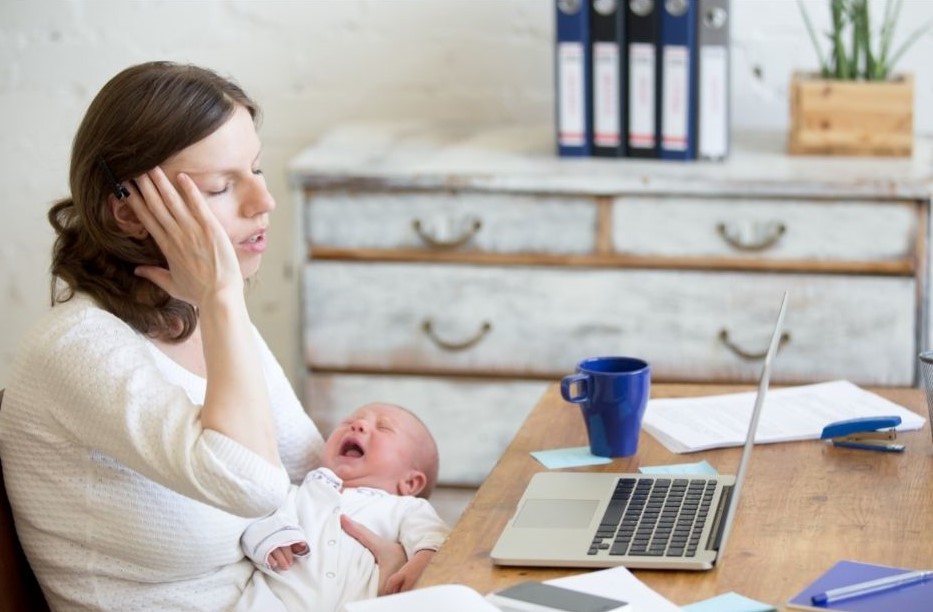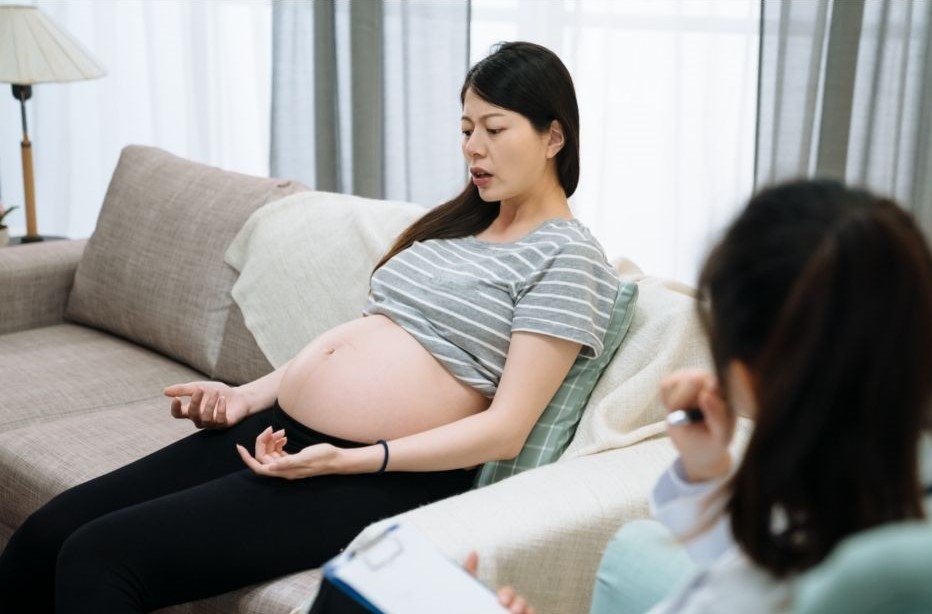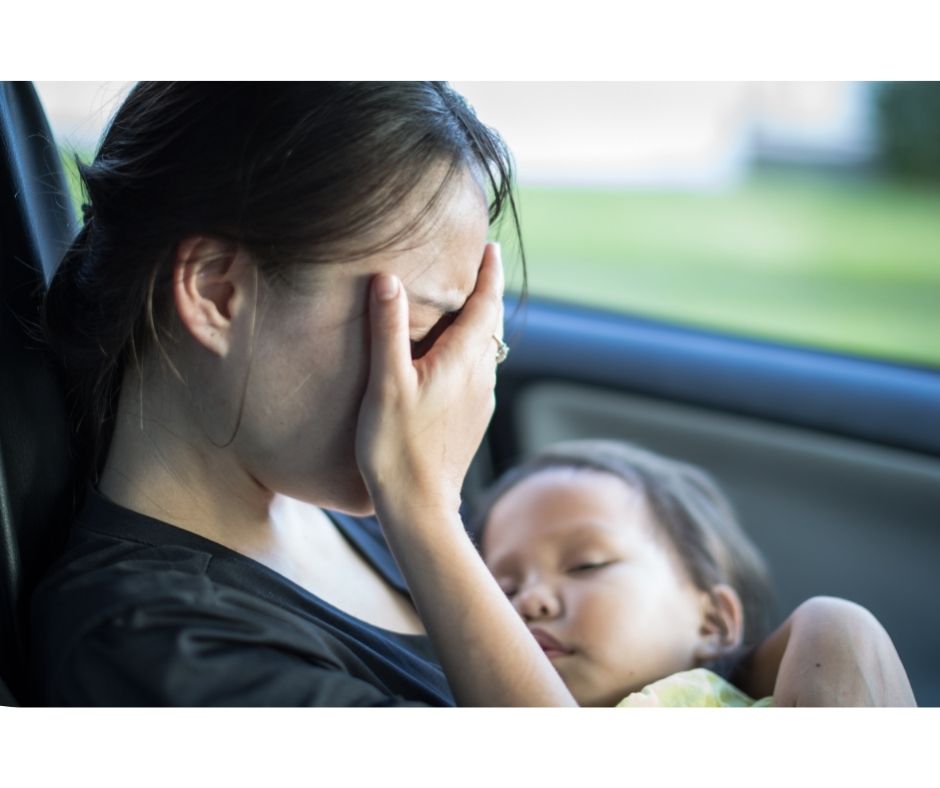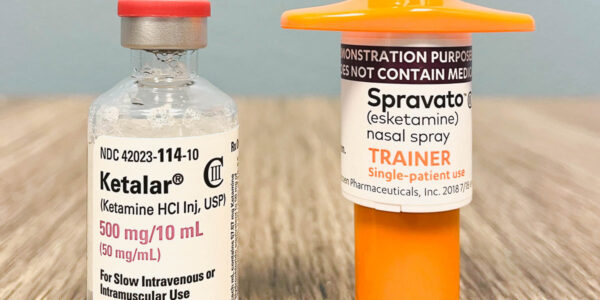LISTEN TO THIS ARTICLE:
Despite being the most common complication of childbirth, Postpartum Depression (PPD) is under-diagnosed or misdiagnosed. One out of every seven women will experience postpartum depression. Learning more about your postpartum depression risk will help you advocate for the mental health support and care you need through pregnancy and after childbirth. There are some easy steps you can take before your delivery day to welcome your new baby with a ready heart and resilient mental state.
Does everyone who has a baby get depressed?
Postpartum depression has many of the same symptoms of a major depressive episode.
While 50 and 85% of new mothers experience a brief postpartum period of tearfulness and anxiety, termed “postpartum blues,” only 10 to 15% of women experience postpartum depression. Postpartum depression has many of the same symptoms of major and minor depression including crying spells, insomnia, depressed mood, fatigue, anxiety, and poor concentration. Women suffer an irritable, severely depressed mood that occurs within 4 weeks of giving birth.
All people who give birth are at risk of experiencing PPD regardless of their race, socioeconomic level, age, or marital status, but a smaller number of women are more vulnerable to PPD. Even if you have some postpartum depression risk factors, that does not guarantee you will experience postpartum depression.

Is it Baby Blues or more serious?
Postpartum blues develop in 50% to 70% of all women following childbirth, beginning at day 3 or 4 and usually ending within 2 weeks. Baby blues symptoms are crying spells, insomnia, depressed mood, fatigue, anxiety, and poor concentration.
Postpartum depression most commonly develops within 4-12 weeks of giving birth, but can occur up to a year after your baby is born. Women may experience mild, moderate, or severe depressed moods with most of the postpartum blues symptoms listed above.
PPD is a serious condition that affects not only the mother but also her child, her partner, and the family as a whole. If a mother becomes suicidal, PPD can be life-threatening.
Postpartum psychosis is a very rare occurrence (1–2 per 1000 deliveries) and has clinical features including mania, psychotic thoughts, severe depression, and other thought disorders. It is a psychiatric emergency and can require referral for hospitalization.
Who is at greatest risk for postpartum depression?
Women who report marital dissatisfaction and/or inadequate social supports report the highest levels of PPD.
Researchers study large numbers of women with postpartum depression and mood disorders looking for relationships or correlations between certain characteristics. For example, researchers observe that women who survive a traumatic birth are more likely to experience PPD. As scientists love to say though, correlation does not equal causation. This means that just because you have a traumatic birth, it does not guarantee that you will have postpartum depression. Keep this in mind as you consider some of these predictors or risk factors for postpartum depression:
- Prenatal depression – Depression during pregnancy may be the strongest predictor.
- Prenatal anxiety
- History of previous major depression, bipolar disorder, or premenstrual dysphoric disorder.
- Postpartum blues – Especially when severe, this may predict the onset of PPD.
- Recent stressful life events
- Inadequate social supports
- Poor marital relationship
- Low self-esteem
- Childcare stress
- Difficult infant temperament (colicky baby)
Other risk factors that are not reliable enough to be used for screening purposes but which do make parents more vulnerable to postnatal mood changes are:
- Using Assisted Reproductive Technology (ART), like IVF to become pregnant.
- Experiencing birth trauma
- First-time moms
- Younger mothers (under 20) and older mothers (older than age 35)
- Twin or multiples pregnancies
- BIPOC women
- Women in larger bodies or those who are experiencing obesity
- Women with high-risk pregnancies
- LGBTQ+ families
- Having gestational diabetes
A complex recipe for postpartum depression
All mood disorders – especially postpartum depression – are complex. We still don’t fully understand what causes postpartum depression. The abrupt decrease in hormone levels after having a baby for sure plays a role in the development of postpartum depression. However, we also know it is not as simple as hormones, because not every postpartum mom becomes depressed. There is no one recipe for postpartum depression.
The mix of postpartum depression’s ingredients is a blessing and a curse. Because there is no one cause of postpartum depression, it can be difficult or time-consuming to find a way for women to heal and feel better as quickly as possible. Although, it also means that there are many tools and treatments to try, especially if the first one or two don’t work.
Recognizing vulnerability and building resilience for postpartum protection
Optimizing your postpartum mental well-being involves taking a closer look at your risk factors or vulnerabilities for postpartum depression. That way, you can plan ahead to strategically build your strengths and resilience.
Resilience is your ability to adapt, withstand, and recover from stress and adversity during and after your pregnancy.
Unfortunately, there is no clinically proven way to predict your postpartum depression risk, but there are some small and easy steps you can take to reduce your vulnerabilities.

Your personalized postpartum mental health preparedness plan
Just as you assemble an emergency preparedness kit if you live in an earthquake zone, preparing mentally before giving birth can help keep you safe and healthy. You hope you’ll never have to use it, but it helps to know you are prepared if need be.
The goal of your postpartum mental health preparedness plan is to find ways to reduce as much stress in your days as possible.
It is a good idea to start preparing earlier than you think you need to. Fifty percent of “postpartum” major depressive episodes actually begin prior to delivery. Women with a history of depression during pregnancy are seven times more likely to experience significant postpartum depression. All the more reason to prepare!
1. Find a therapist and figure out your mental health insurance benefits while you are pregnant.
When you are feeling down, it can be overwhelming to try to find someone to talk to. During your pregnancy identify in-network providers accepting new patients. You may even want to establish a relationship with a counselor or therapist before you deliver and schedule some appointments for after your delivery. You can always cancel the appointments if you are doing great! Postpartum Support International lists specially-trained mental health providers on their website directory of specially-trained mental health providers. If you liked a therapist you saw in the past, reconnect and see what their experience is working with postpartum mood disorders.
2. Organize a meal train.
Make your own or task a good friend with the job. Meal trains are among the best ways to engage your social network, to eat well for your and your baby’s health, and also coordinate if and who you will see in the early days. Consider a sign-up list or meal delivery gifts as a part of your baby shower registry. Cutting back on the stress from postpartum visitors and trying to figure out what the heck to eat is one way to make your postpartum days a little bit easier.
3. Knowledge is power.
In between researching baby names and the best breast pump, try to spend a little time learning about the fourth trimester ahead of your D-day. Some great places to start are Kimberly Ann Johnson’s The Fourth Trimester, Postpartum Support International, or MGH Center for Women’s Health, patient guides.
4. Consider doing some relationship housecleaning.
Interpersonal psychotherapy (bringing your partner to a therapy session with you, for example) can help reduce your postpartum depression risk. Focusing on your interpersonal relationships, linking them to changes in your mood, identifying major problem areas (grief, interpersonal role disputes, role transitions, or interpersonal deficits) are all helpful in building your emotional resilience. Interpersonal therapy can also help reduce your partner’s postpartum depression risk. About 10% of male partners develop postpartum depression. Risk factors for the father developing depression include having previous mental health issues.
5. Build your team and your playbook.
New moms report that postpartum support groups help ease the suffocating loneliness or boredom of life with a baby. Who makes the cut for your postpartum survival team varies from woman to woman. Whether it is a breastfeeding support group, staying in touch with moms from your prenatal education class, or a postpartum depression-specific group like those offered for free and online by Postpartum Support Information (PSI), there is a community for you.
Beyond a mom’s group, talk with your postpartum support team – those people in your life who will do anything to help you. When you are in depths of emotional darkness, you can be blind to how bad things are. Talking through the warning signs of postpartum depression ahead of delivery with your support team is good prep work. So is ironing out a communication strategy for how they can let you know if they are worried about your well-being.
6. End the shame game.
Postpartum depression isn’t a character flaw or a weakness. Just because you are having second thoughts about deciding to become a mother, does not mean you are a bad mother. You do not need to feel embarrassed about asking for help. Give yourself permission to have scary-mommy days.

Preparing for postpartum depression protects you and your family
At its worst, postpartum depression can feel like you are drowning and like there is nowhere to turn for help. Blinded by overwhelming anxiety, sadness, and fatigue, it can feel impossible to even try to think of a way out.
By building a postpartum protection plan for yourself, you are giving yourself and your new family the gift of emergency preparedness and peace of mind. The focus needs to be on limiting collateral damage – to yourself, your baby, or your partner. Feeling better as soon as possible is of the utmost importance when a mom and a new baby are involved. Assembling your postpartum support team before your delivery builds your sense of self-efficacy, bolstering your mental health. Knowing that you have help if needed, a plan in place, and resources ready allows you to focus on healing after your delivery and enjoying motherhood.


 Learn
Learn Read Stories
Read Stories Get News
Get News Find Help
Find Help
 Share
Share
 Share
Share
 Share
Share
 Share
Share



